It took the feudal lords of the Takamatsu Domain in the Edo period over 100 years to fully complete “Ritsurin Garden”. This garden was once called Ritsurin-so. After it was built, successive Takamatsu Domain lords used the garden as a place to entertain guests.
Mt. Shiunzan acts as the background for the six ponds and thirteen artificial hills that have been skillfully combined into one large strolling-style garden. It is also said to have over 1,000 pine trees, as well as flowers that beautifully illustrate the distinct charms of all four seasons. The garden exemplifies the Japanese phrase of ippo ikkei ‘one step, one view’; a change in scenery with every step allows visitors to become charmed by something else no matter when they visit.
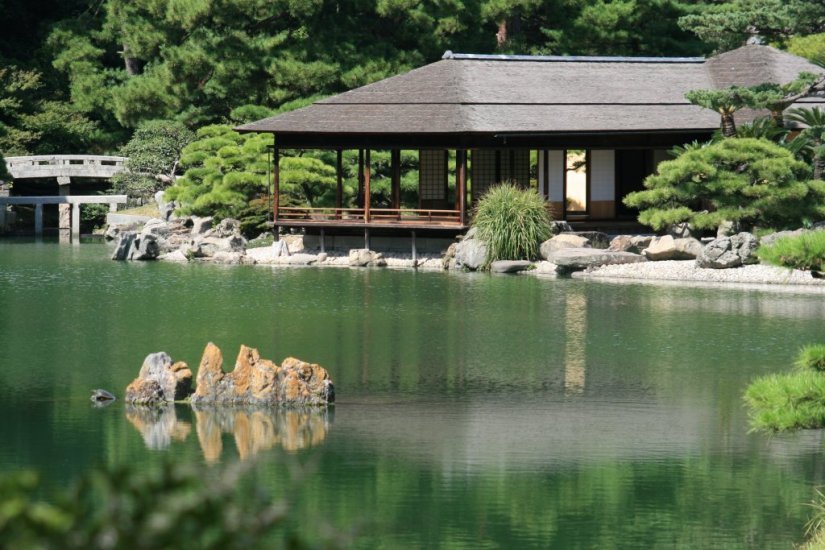
Designated as Special Place of Scenic Beauty, also known as National Treasure of Garden, Ritsurin boasts the title of the largest garden of cultural properties in Japan. Internationally, the park has received the highest rating of three stars from the Michelin Green Guide Japan, and Lonely Planet, the world’s best-selling guidebook, listed it in their picks for Best in Travel 2022. The garden’s artistry and charm have also been widely praised by media outlets all over the world.
With the ever-increasing demand for tourism in recent years, Ritsurin has become a representative sightseeing spot for Kagawa, as well as a beautiful cultural property garden once used by feudal lords. It is not only tourists that are interested, however. International experts in diverse fields such as architecture, landscaping, art, environment, hydrogeology, and flora and fauna studies have taken notice of Ritsurin’s unique features.
Ritsurin Garden Guide Map
Visitors to Ritsurin Garden can enjoy strolling and observing the park in a variety of ways, based on their own interests and perspectives, but it should be noted that this is the largest designated cultural property garden in Japan. The flat garden area is approximately 16.2 hectares, it is 3.5 times as big as the Tokyo Dome. The area including Mt. Shiunzan in the background is about 75 hectares.)
For those who want to tour the garden efficiently in a short time or only want to see the most scenic areas, we offer a recommended route and useful information (60 min. + 30 minutes on a Japanese-style boat). *The 60-minute route includes a 20-minute tour of Kikugetsu-tei Teahouse with a matcha tea experience. The Kikugetsu-tei pavilion has an entrance fee of 800 yen per person including matcha and sweets or 600 yen per person including sencha and sweets.
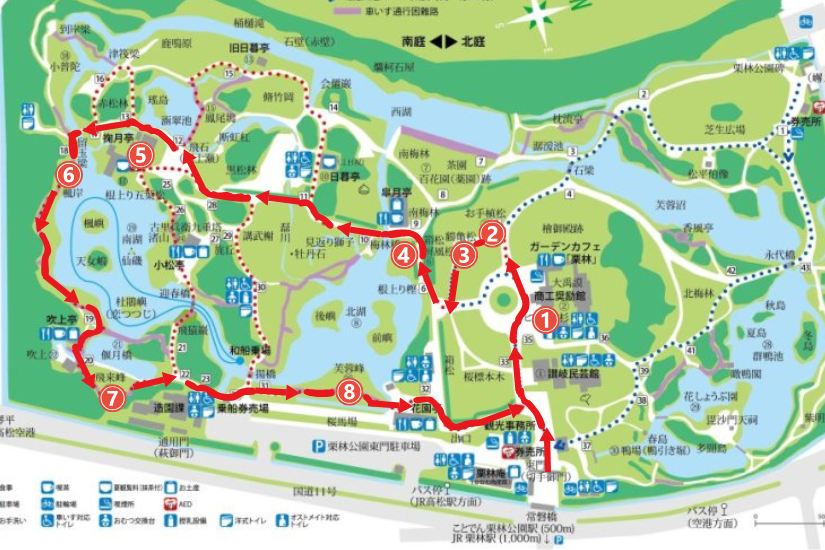
Ritsurin Garden Recommended Route: East Gate Route (60 minutes + 30 minute Japanese boat ride)
1. Commerce and Industry Promotion Hall “Sanuki State Guesthouse”
The Ritsurin Garden Commerce and Industry Promotion Hall is centrally located within Ritsurin Garden, just to the right after entering through the East Gate. Its origin is at the Kagawa Prefectural Museum, which was built in 1899 on the Hinoki-goten (Cypress Palace) site, a villa of the former lord of the Takamatsu-Matsudaira clan. The symmetrical design was created by Imperial Household Artist Ito Heizaemon (living natural treasure at the time) and is modeled in an ancient Japanese architectural style with elements of Western influence after the Houou-do (Phoenix Hall) at Byodo-in Temple.
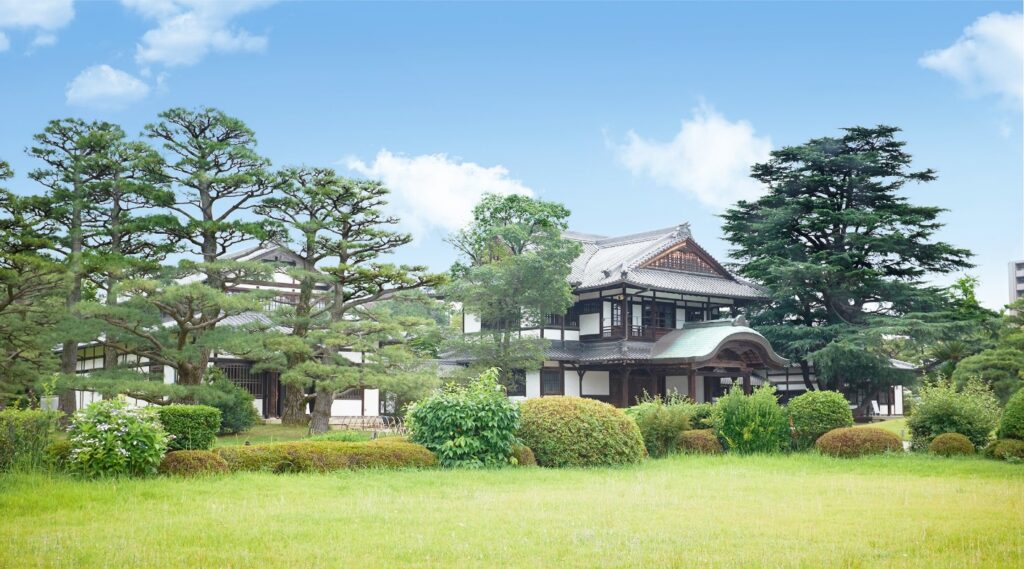
The Main Building is centrally located, with North, West, and East Buildings branching off via connecting corridors. Commerce and Industry Promotion Hall is a unique venue that can create a special atmosphere and regional characteristics with the North Building that can accomodate various business purposes such as international conferences, company parties, international exhibitions, as well as lectures, assemblies, training sessions, and off-site meetings. The West Building houses the Garden Café Ritsurin, where visitors can enjoy food and drinks made from seasonal Kagawa ingredients.
2. Oteue-matsu (Hand-Planted Pine Trees)
Within Ritsurin Garden are five pine trees that were hand-planted by members of the royal families. From right to left, they are arranged as follows: Prince Nobuhito Takamatsu, (1914), Emperor Hirohito (1914), Prince Chichibu Yasuhito (1914), King Edward VIII (1922, as crown prince), and Princess Kitashirakawa Tomiko (1925). King Edward VIII was the uncle of the late Queen Elizabeth, ascending to the throne for only 11 months before abdicating to marry an American woman. After leaving the throne, he was granted the title of Duke of Windsor. His life would later go on to form the basis of the movie and musical, “W.E.” Ritsurin Garden is a place where visitors can see this garden’s invaluable connections with the Japanese Imperial Family and the British Royal Family.
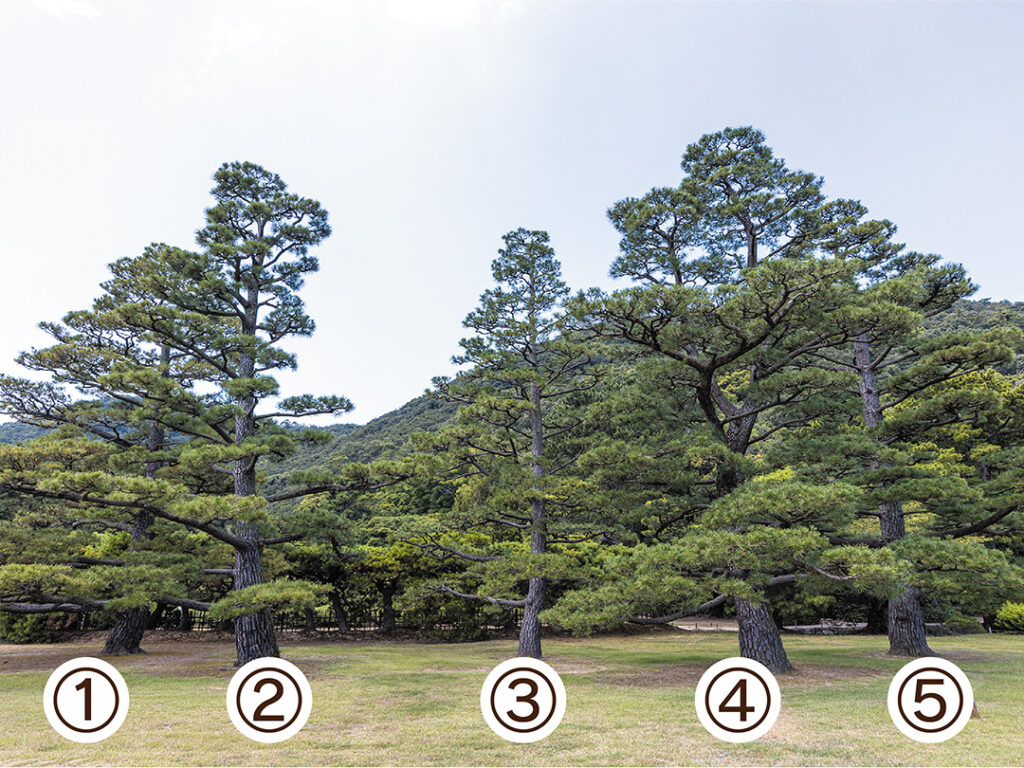
①Princess Kitashirakawa Tomiko ② King Edward VIII ③Prince Chichibu Yasuhito ④Emperor Hirohito ⑤Prince Nobuhito Takamatsu
3. Tsurukame-matsu (Crane and Turtle Pine)
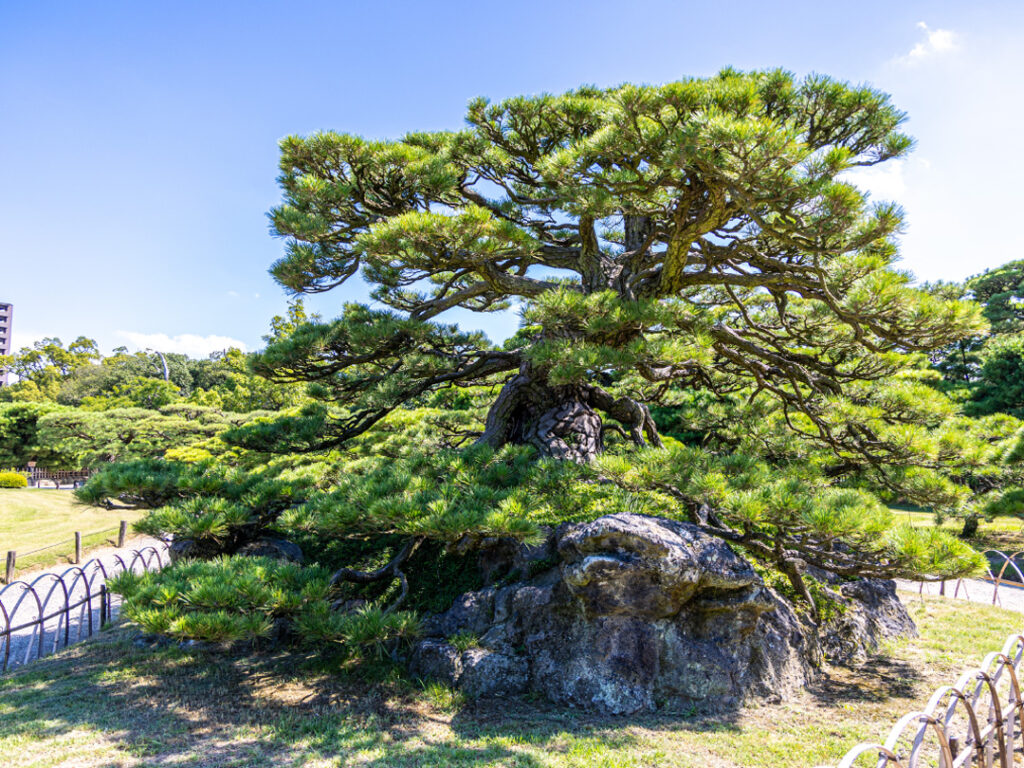
At first glance, the one hundred and ten-rock formation calls to mind a turtle, and the large black pine with its horizontally extending branches resembles the beautiful figure of a crane with outstretched wings. A crane alighting on a turtle’s back is said to be an auspicious sight. Tsurukame-matsu is widely considered one of the most beautiful trees in the park and is a must-see when visiting Ritsurin Garden. It has been featured in numerous pieces of media, such as Tokio’s “THE TETSUWAN! DASH”.
4. Hako-matsu (Box Pine)/Byobu-matsu (Folding Screen Pine)
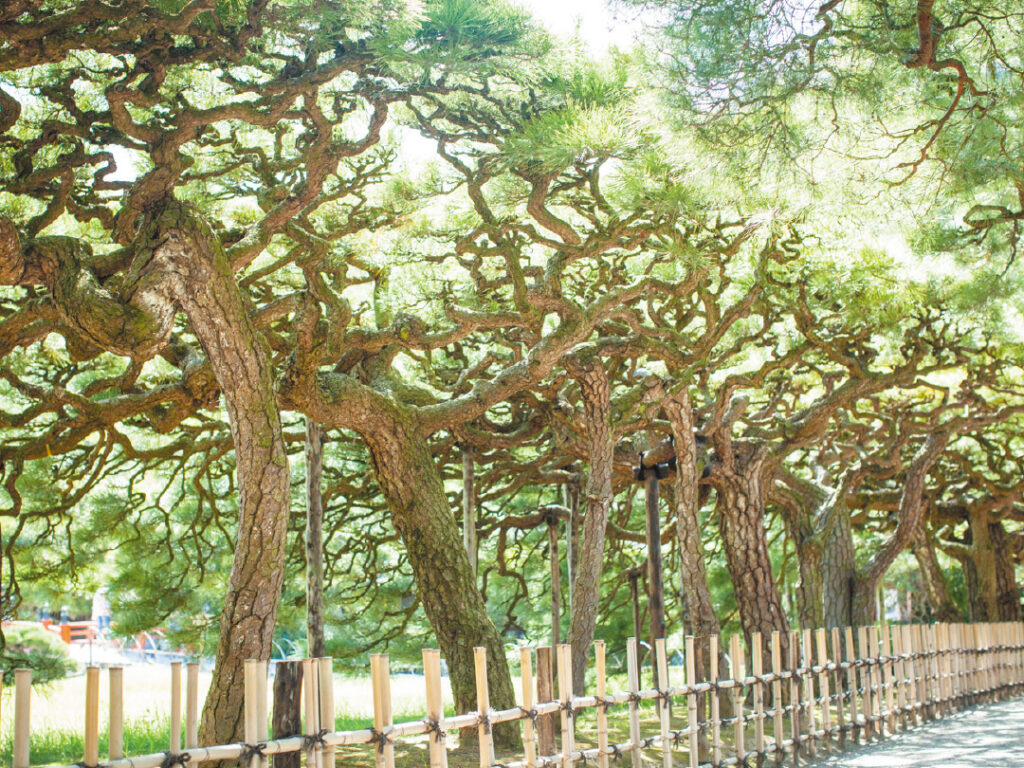
The area around the Hokko (north pond) features an elegant pine tree hedge arrangement typical of Japanese gardens. The towering Byobu-matsu hides the buildings in the North Garden from the South Garden, while the Hako-matsu tree arranged in the shape of a box stands just in front, displaying the craftsmanship of the hedge artisans. The path between the Hako-matsu and Byobu-matsu allows visitors to appreciate both natural and sculpted beauty in tranquil silence. Pay special attention to the intricately entwined branches and delicately trimmed hedges of Hako-matsu. This beautiful contrast is featured in the history of Japanese gardens and can be enjoyed along with the unique scenery of each season.
5. Kikugetsu-Tei/Neagari-goyomatsu (Exposed Root White Pine)
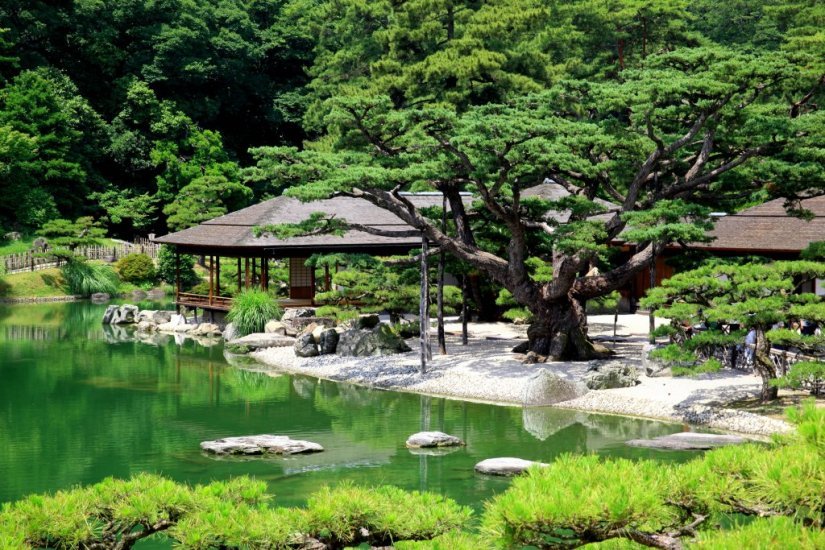
*The 60-minute route includes a 20-minute tour of Kikugetsu-tei Teahouse with a matcha tea experience. The Kikugetsu-tei pavilion has an entrance fee of 700 yen per person including matcha and sweets or 500 yen per person including sencha and sweets.
Kikugetsu-tei is an important tea house that is said to have been used by multiple successive feudal lords to invite important guests. It was constructed in the Sukiya-zukuri style so that it appears as front view from all directions, and beautifully blends in with the surrounding scenery of the garden. Looking out from the windows inside allows visitors to see the seasonal scenery around the ponds and trees as if it were a painting.
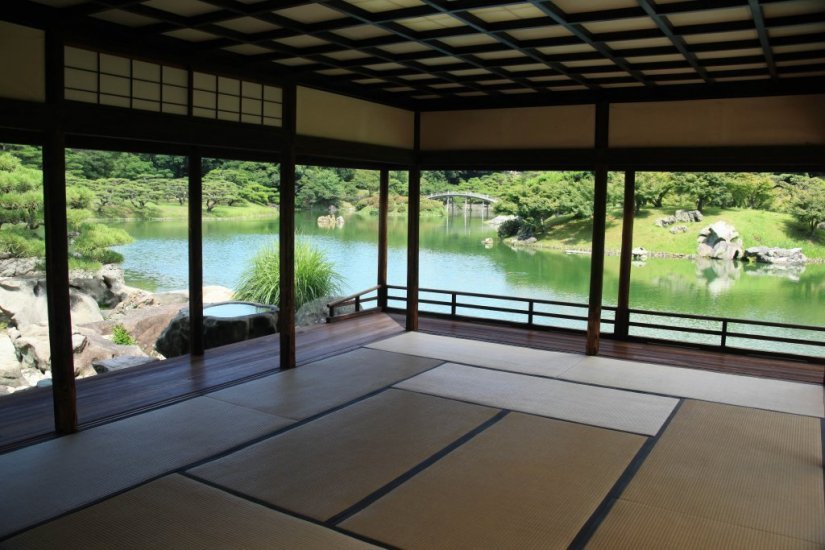
Nearby is the Neagari-goyomatsu, whose exposed roots can be seen in a beautiful curve. It is said that this white pine tree, which is over 300 years old, was planted in 1833 when Yorihiro Matsudaira received a bonsai tree from shogun Tokugawa Ienari in Edo (present-day Tokyo). Even after growing larger in the garden, it still retains its bonsai-like appearance.
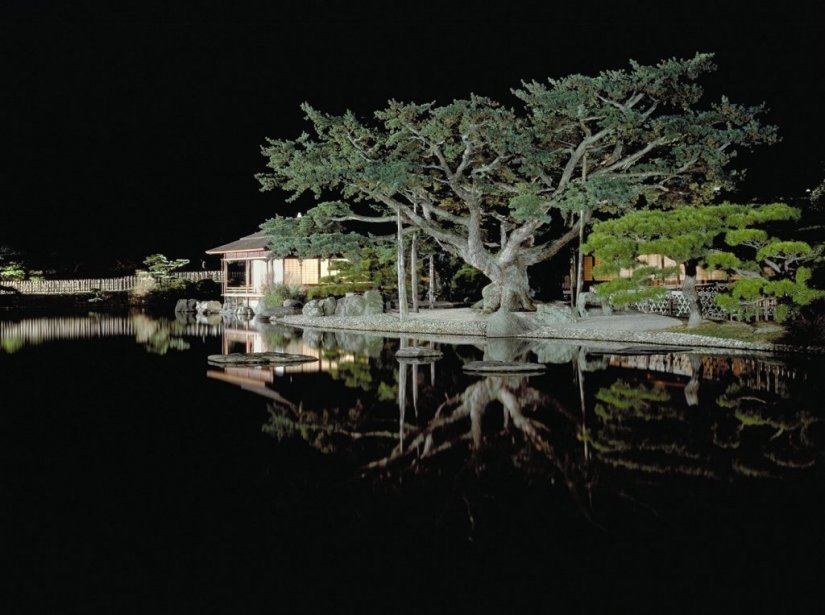
6. Fuugan
Fuugan is a small path of maple trees along the shore of Nanko (south pond). In fall, you can observe the beautiful colors of the leaves as they change to red alongside the painting-like image reflected on the lake’s surface. From late November until early December, the trees along the path will be lit up, providing a mystical view that can’t be seen during the day. [Friday, November 22 – Sunday December 1: Fall Light-Up Period in Ritsurin Garden]
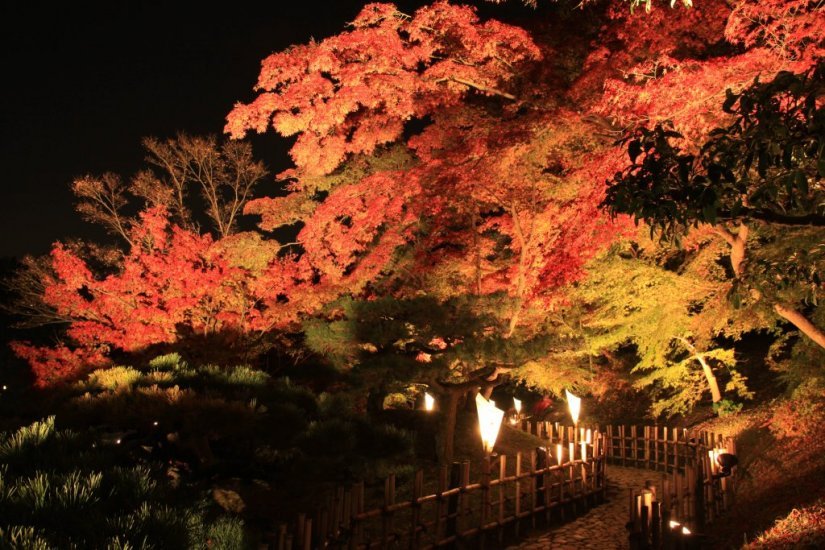
Fall isn’t the only time to come and visit, however. In spring, the leaves are colored with verdant green, while in summer, you can feel the cool breeze passing by over the water. Each season allows you to feel nature’s breath in different ways.
7. Hiraiho Hill
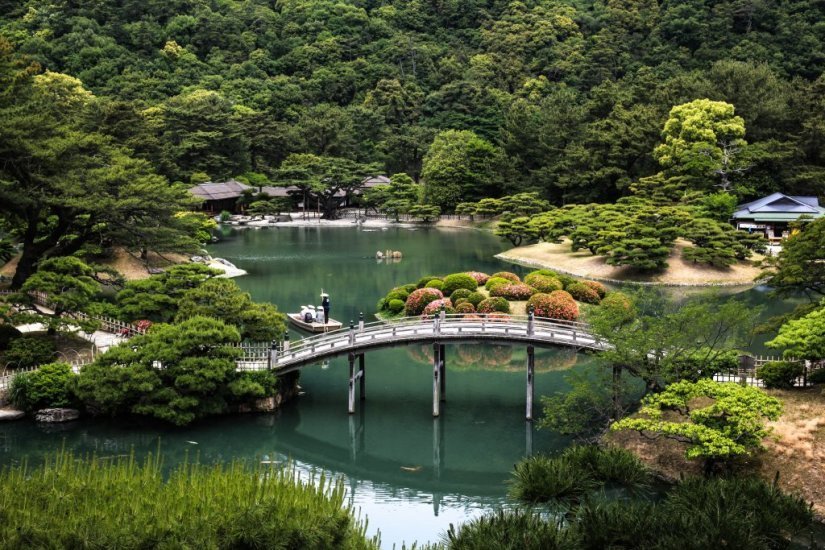
Hiraiho Hill is an artificially constructed hill offering a panoramic view of the garden. Looking from the top toward Nanko (south pond), you can take in the breathtaking sights of Kikugetsu-tei and Engetsu-kyo Bridge against the backdrop of Mt. Shiunzan.
This is truly one of the most beautiful manmade experiences that exemplify Japanese gardens, with each tree, architecture, and bridge carefully crafted and sculped to achieve the perfect splendor. This sight featured on postcards and pamphlets is often considered to be one of the viewpoints that best represents Ritsurin Garden.
In fact, this view is based on the view of the Buddhist Amitabha’s Pure Land to the west, and Hiraiho Hill is strategically located in the southeast corner of the park so you face west as you look out. According to one feng shui master, Mt. Shiunzan represents a dragon facing south, with a lake to the east that is said to be the direction that brings peace and happiness. It’s said that Matsudaira Yoritaka, the fifth lord of the Takamatsu-Matsudaira clan, was also a very scholarly man who took many measures to overcome the financial difficulties of his domain, and may have offered these very prayers. Whether you believe it yourself, why not climb Hiraiho Hill and make your own wishes for peace and happiness while you witness Amitabha’s Pure Land?
8. Fuyoho
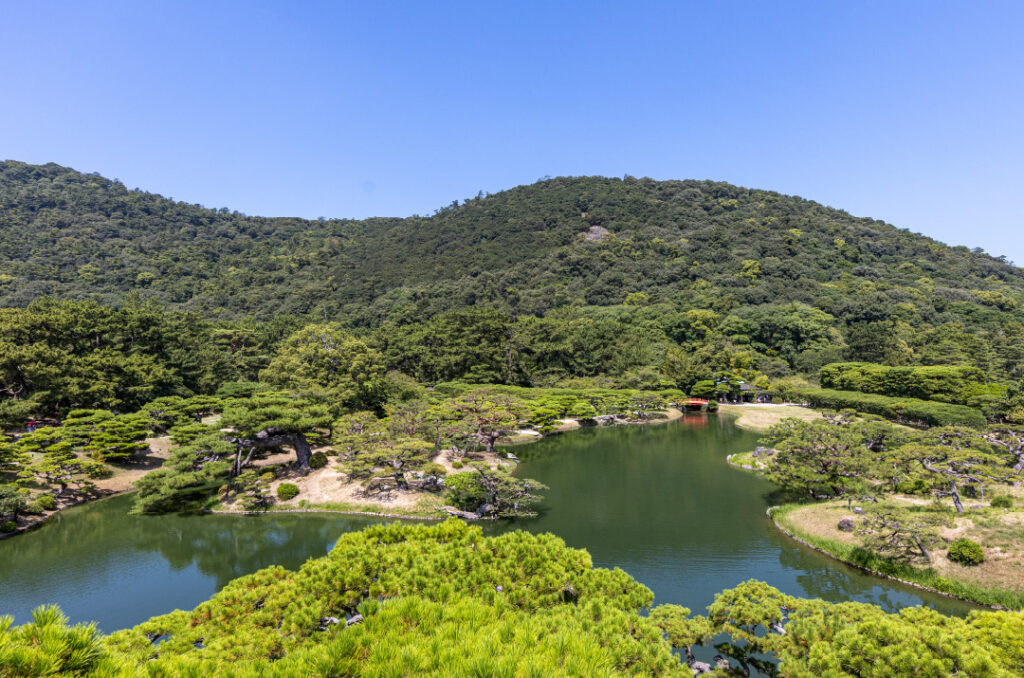
Fuyoho is an artificial hill in the garden, so called because it was said to resemble Mt. Fuji. Fuyo was an alternate name for Japan’s most famous mountain. Looking out from here toward Hokko (north pond), you can see the impressive red accents of the Bairin-kyo Bridge against the pine grove, with the majestic Mt. Shiunzan in the background. On the right-hand side, Hako-matsu and Byobu-matsu contribute to the austere garden atmosphere.
【Must-see if you have time】 Japanese-Style Boat Cruise (30 min.)
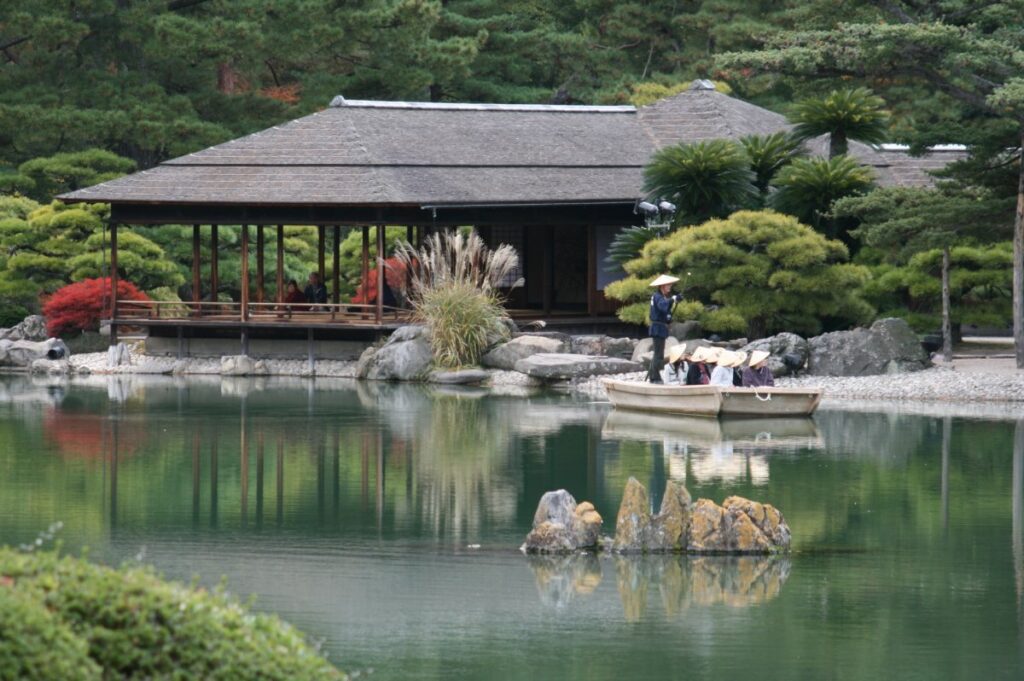
Ritsurin Garden isn’t only for strolling, visitors can enjoy the ride on a Japanese-style boat and see the garden’s beauty from the water as well. Viewing by boat is a popular way to admire the full splendor of the feudal lords’ garden from another perspective. The tour takes about 30 minutes and includes a scenic cruise around Nanko (southe pond).
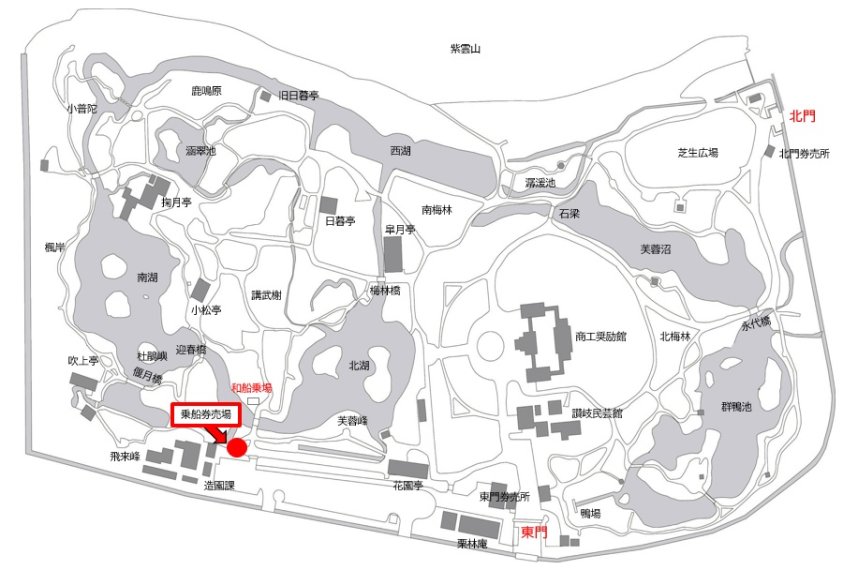
We recommend reserving online to guarantee your spot at least one day in advance. Open spots may be reserved on the day of your arrival, but these are often filled up quickly.
